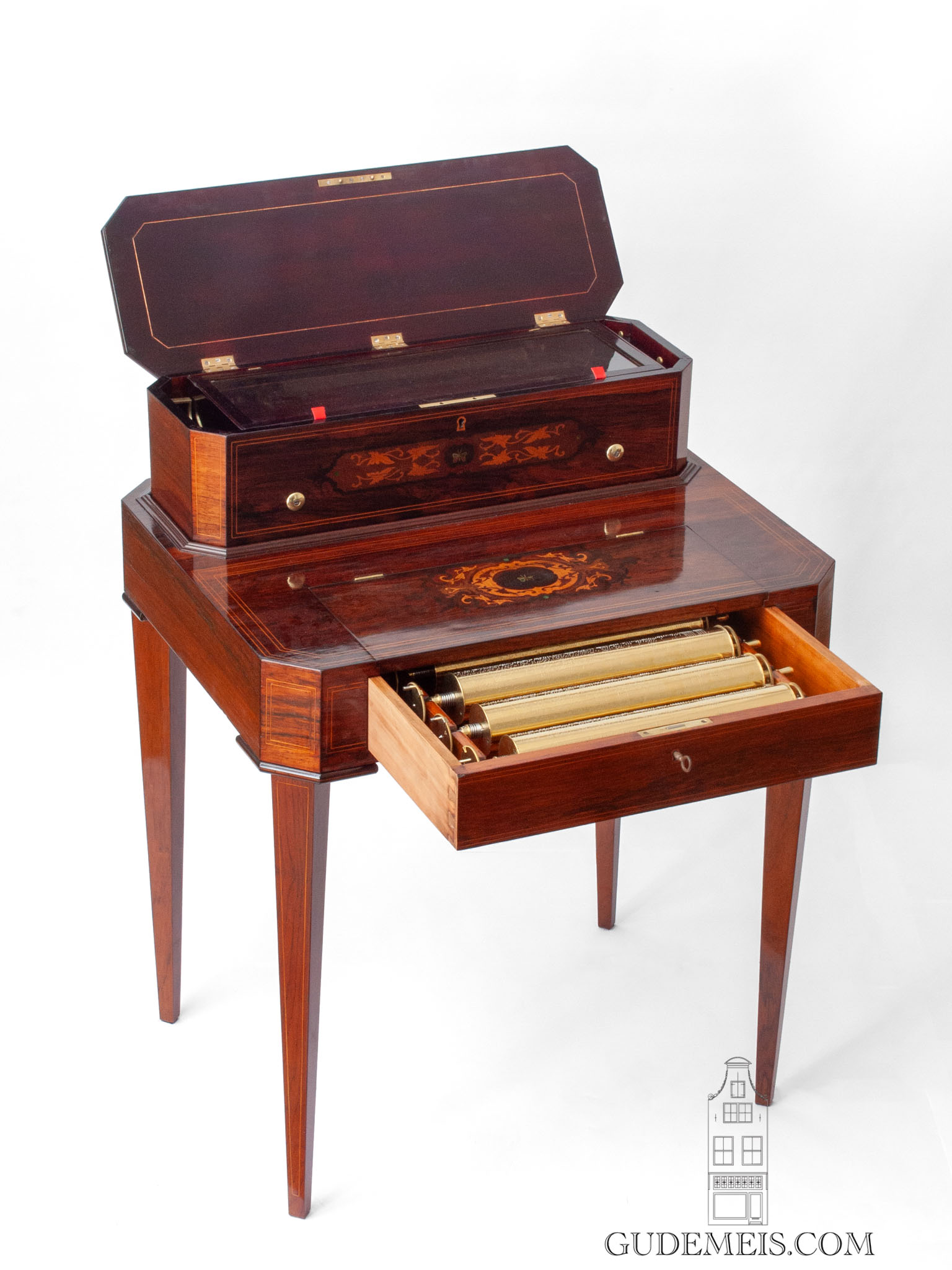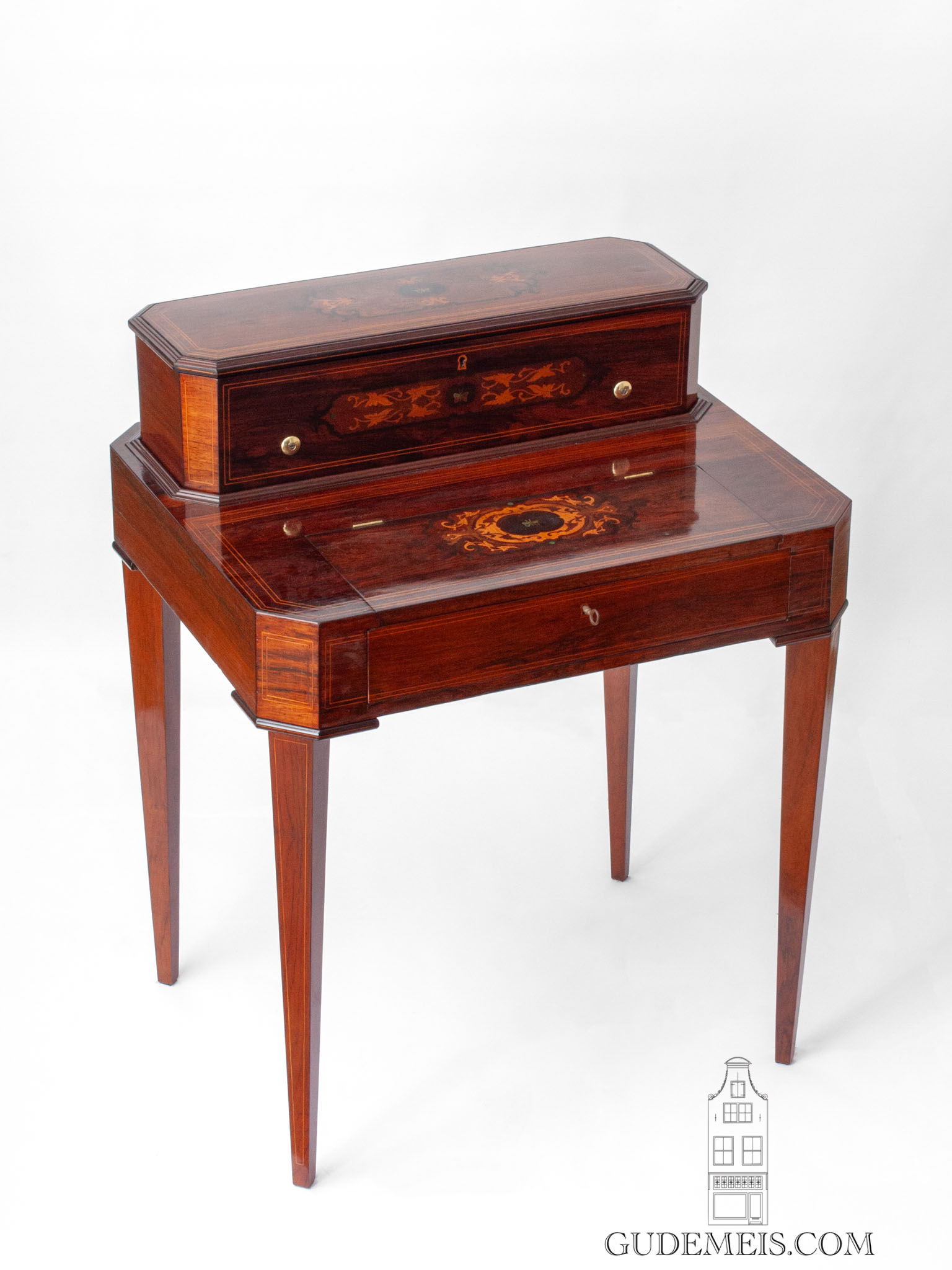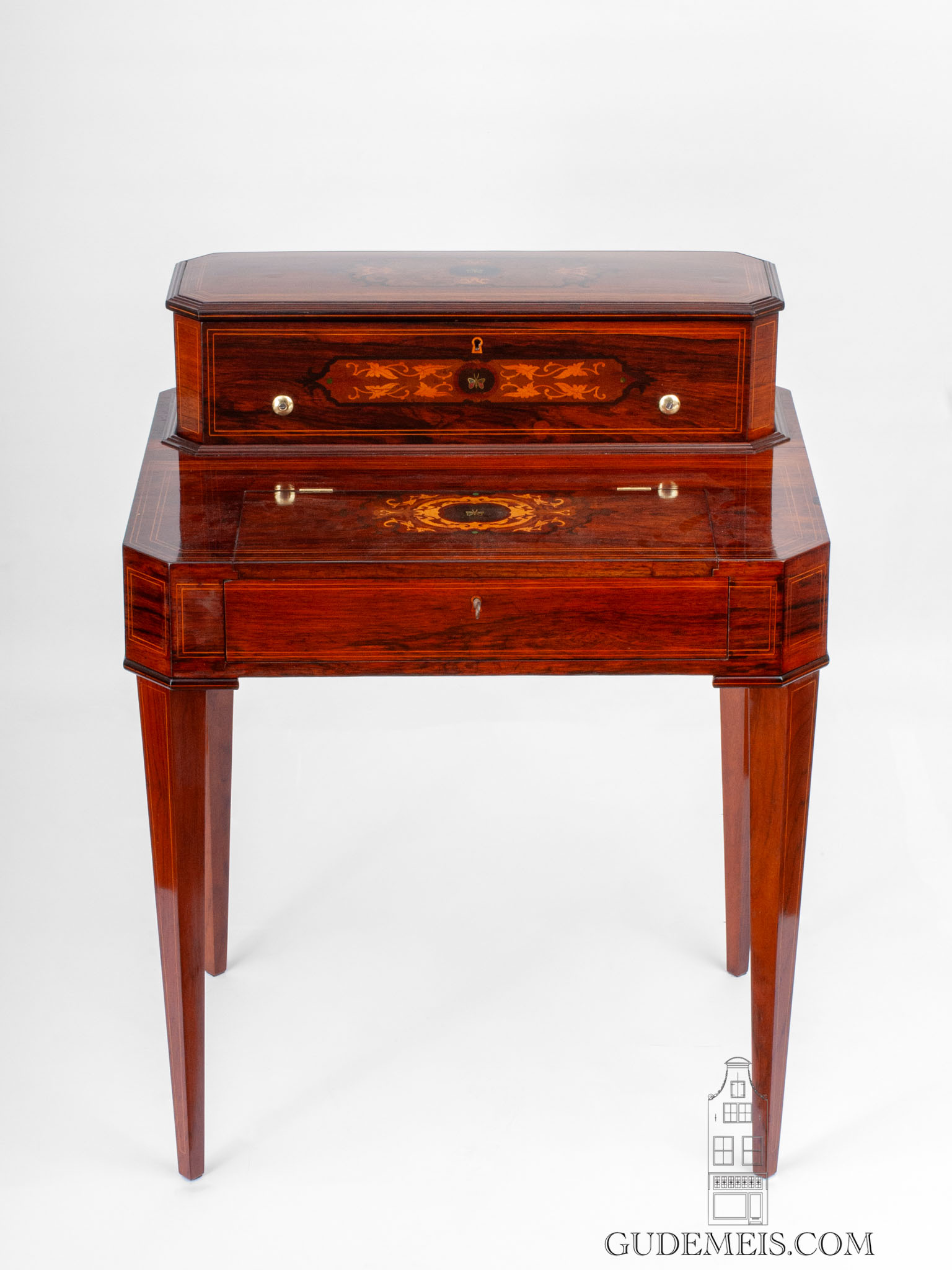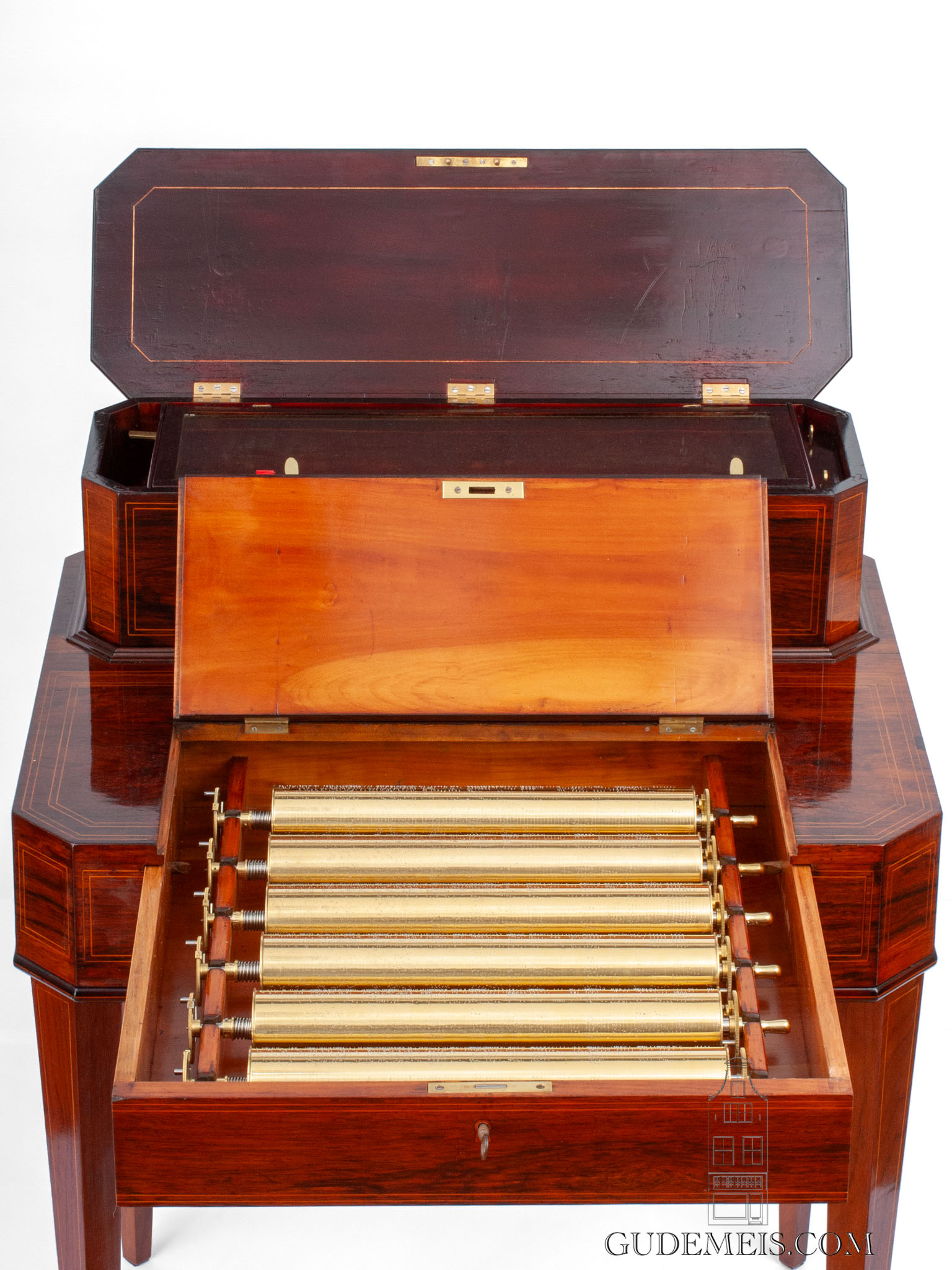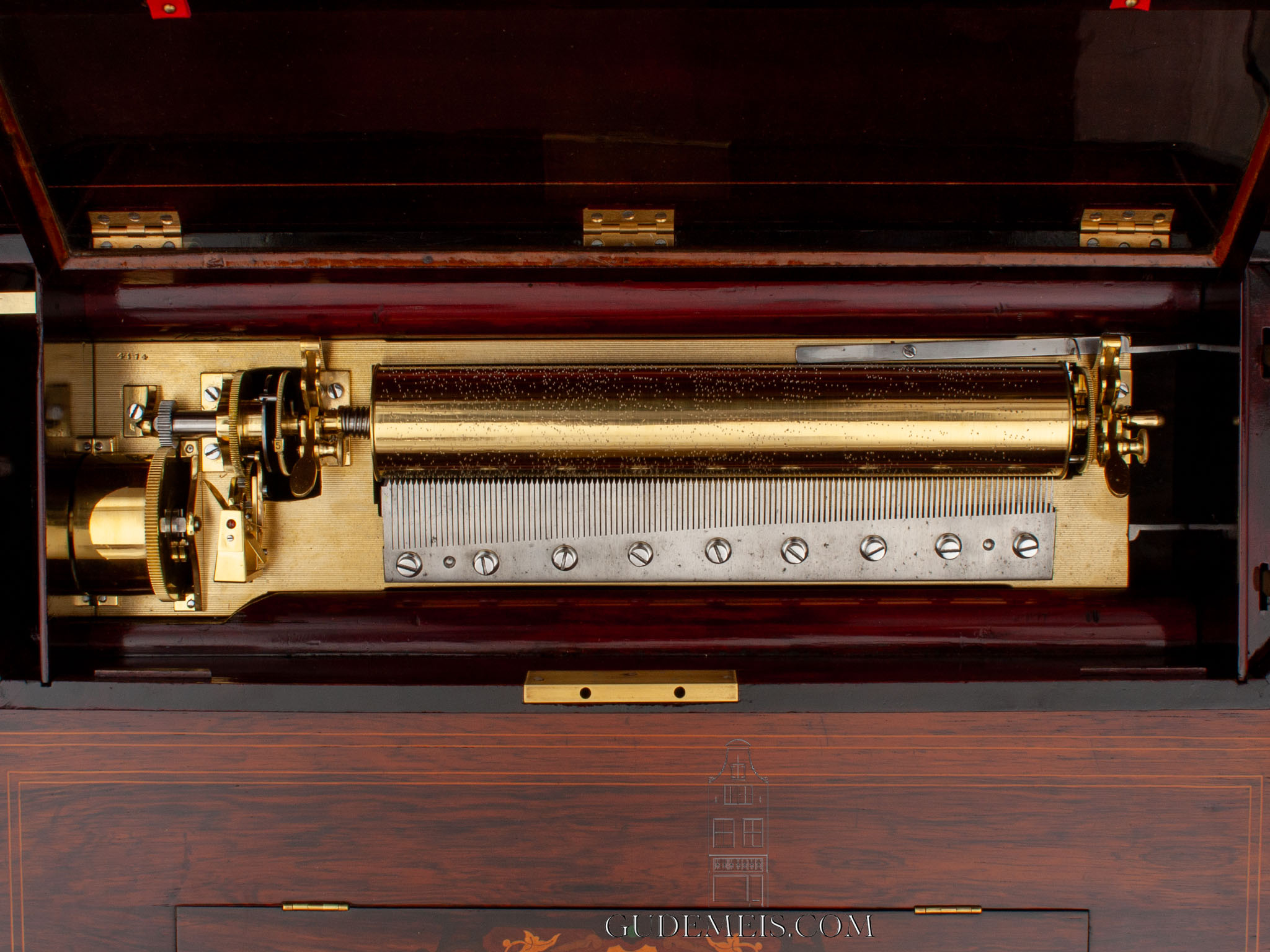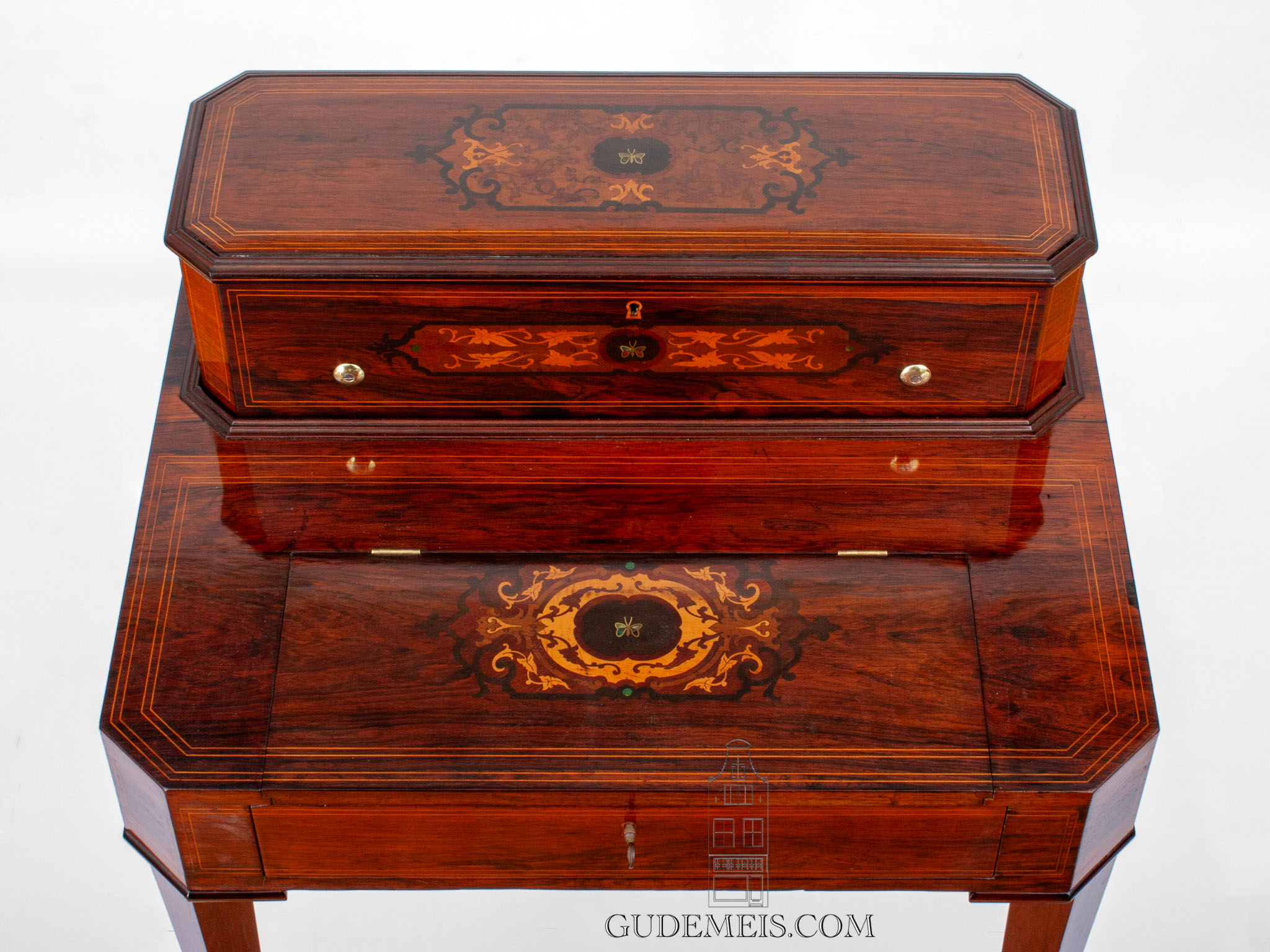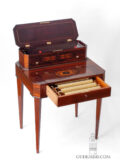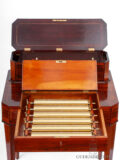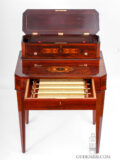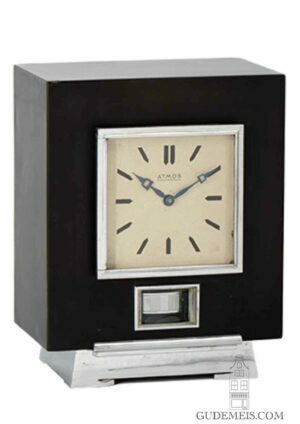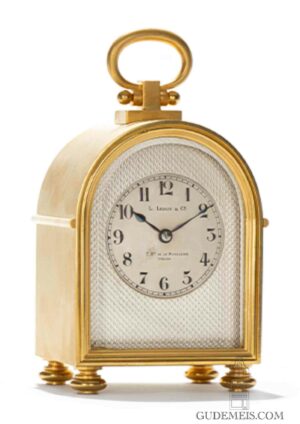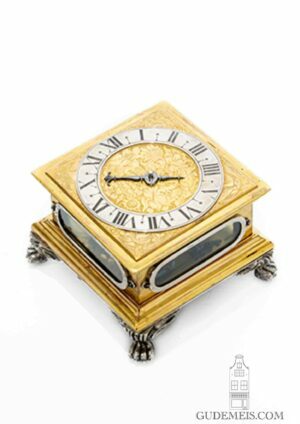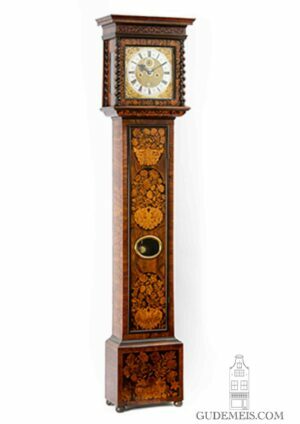A Swiss interchangeable cylinder music box on table, circa 1860.
Description
Interchangeable cylinder music box
At the start of the 19th Century the first cylinder music boxes were made, with a pinned cylinder playing on steel teeth that produced the sound. Musical mechanisms playing on bells and flutes already existed. With this first generation of music boxes the teeth were screwed down seperately or in pairs. In the decades that followed the combs became larger and larger. The makers tried to improve the music boxes with all kinds of inventions. One of the limiting factors was that there was only a limited number of tunes could be pinned on a cylinder. To expand the numbers of tunes that could be played, the makers started to develop music boxes with interchangeable cylinders around 1860. This is more complicated than it might seem at first glance. The set up of the comb and cylinder needs to be very precise, it is a matter of fractions of millimeters. It means that all the cylinders need to placed very precisely. The system needed to be of good quality but also easy to use since privates would operate the box at their own home. And it had to be made in a way that neither mechanism nor cylinders would be damaged in the proces. This particular music box is one of the earlier types. It still has the refined way of playing typical for the earlier boxes but does have six cylinders with six tunes each. It is fitted on a well made compact table with storage space for the other cylinders.
Fixed winding handle
The brass mechanism is numbered 4174 and is driven by a spring barrel with a fixed winding handle. It plays with a 32-cm pinned cylinder on a single comb. To the right there are two operating levers for start/stop and repeat/change (the melody). The cylinder is fixed with two clips that can be opened making it possible to change it. The mechanism can be attributed to Ducommun Girod.
Marquetry
The case has canted corners and is veneered with rosewood. The lid has a fine marquetry inlaid ornament. It is mounted on a table with a storage drawer with hinged lid giving easy access to the cylinders. The small table is supported by tapered feet.
